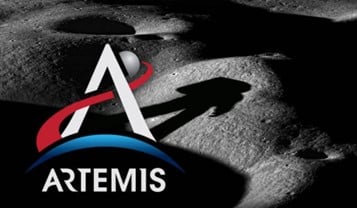When designing turbomachines, the quality of the final product can often be improved by implementing a holistic approach to the engineering process. As with many complex mechanical systems there are a significant number of competing requirements that impact the overall success of the system. By fully understanding the nature of these compromises, and how the various subsystems interact, the design will be improved. This interplay is particularly noticeable in the design of integrally geared (IG) turbomachinery.
An integrally geared turbomachine is a compressor or expander with the gear train built directly into the machine. The input/output shaft accepts a standard motor or generator unit at typical synchronous speeds of 1800/1500 rpm, 3600/3000 rpm, etc. For the sake of this blog we will be discussing a multistage compressor with a bull and pinion gear configuration; however, the discussion will apply to most types of IG turbomachinery. Benefits of an IG machine often include reduced size and footprint (as a separate stand-alone gearbox does not need to be accommodated), reduced component count (as the bearings, seals, and couplings are consolidated), and the ability to accept a standard prime mover or generator (which may be customer supplied).
When designing an IG turbomachine, the engineer needs to consider the standard design tradeoffs that come with all turbomachinery: operating range vs. peak performance, tip speed vs. material considerations, running clearance vs. rotordynamics and tolerancing, etc. The design engineer must also be mindful of all the design considerations specific to multistage machines, such as criticality of inter-stage pressure drop, and torsional dynamic concerns. Added to that, the design engineer must also look at tradeoffs specifically applicable to the IG machine. Typically, the first tradeoff to be evaluated is the stage/pinion work split, which can be further complicated in a machine with an odd number of stages. This evaluation goes hand in hand with the preliminary design of the gear system to ensure acceptable gear ratios and tooth loading at the pinion/bullgear interface.
After a preliminary aerodynamic design to ascertain the desired operating speeds and impeller specific speed, a design exercise can be conducted, assessing the possible stage configurations. For example, in a three-stage compressor, do you mount stage one and stage two on the same low-speed pinion, and stage three on the high-speed pinion, or do you gang stages two and three together and leave stage one alone on the lower speed shaft? Also, for the pinion running multiple stages, do you choose an operating speed directly in-between the preferred speeds for either stage, or do you bias the performance to one stage? This scoping needs to be done with an understanding of the mechanical limitations of both the gear teeth and the bearing systems so that appropriate bounding can be applied . One solution is to select one stage to be the “dog” and take the majority of the design compromises on that stage while minimizing work output, thereby mitigating the effects on overall machine performance. For example, in a three-stage machine, stages one and two can be put on the low-speed pinion with stage three on its own higher-speed shaft. Stage one and three can be optimized for the desired performance, with some small compromise being made to stage one, to operate at a slightly higher than desired specific speed. Stage two can then be designed at non-optimum specific speed, but the pressure ratio can be made notably lower than the other stages, minimizing the impact on system performance.
The design decision outlined above might be influenced by another issue common to integrally geared machinery, such as the best way to handle axial thrust. In a bull gear type IG compressor, thrust is typically handled one of two ways:
-
Thrust collars on the pinions transfer the thrust into the bull gear which then resolves the load into a thrust bearing.
-
Pinion thrust is handled with a thrust bearing directly on the pinion shafts.
An advantage of handling the pinion thrust on the pinion shaft is that this arrangement typically allows for less axial play in the machine, allowing for tighter running clearances and thus higher performance. The tradeoff however is system cost. In the previously mentioned example, if cost is the priority, the designer might opt to use thrust collars to transfer the load into the bull gear. The downside of this approach is that the pinions will have a larger potential axial displacement, necessitating larger total axial clearances. This result can be mitigated by orienting the stages such that the typical thrust during operation closes the axial clearances on stages one and three, and opens the second stage axial clearance. With stage two already being the lowest PR stage, the effects of this increased clearance were reduced.
In addition to the performance-based compromises discussed above, there is also a balancing act between complexity/cost and serviceability. Design decisions need to be made on how far the system needs to be stripped down to service the machine. A system where the pinion needs to be removed for bearing or seal access is cheaper to design, but the magnitude of the servicing task would be greatly increased. Similar cost vs. serviceability evaluations need to be made with regard to the impeller attachment methodology. Does the designer adopt a spline or curvic attachment that is more expensive but easier to remove, or do they implement a tapered hydraulic or straight fit? These examples are just a small subset of the tradeoffs required throughout the design process that need to be evaluated and understood, in order get a truly optimized machine.
While all complex design tasks involve the use of a matrix of engineering decisions and tradeoffs, the design of an integrally geared turbomachine has a particularly elaborate set of dependencies. The design requires a holistic approach, from a team of experienced engineers and aerodynamicists, to deliver the best possible product for a specific set of system needs.




